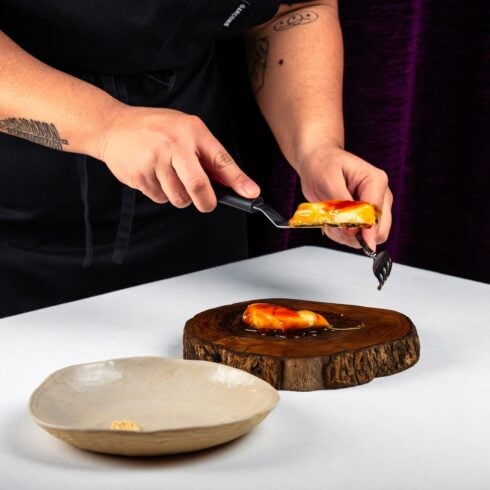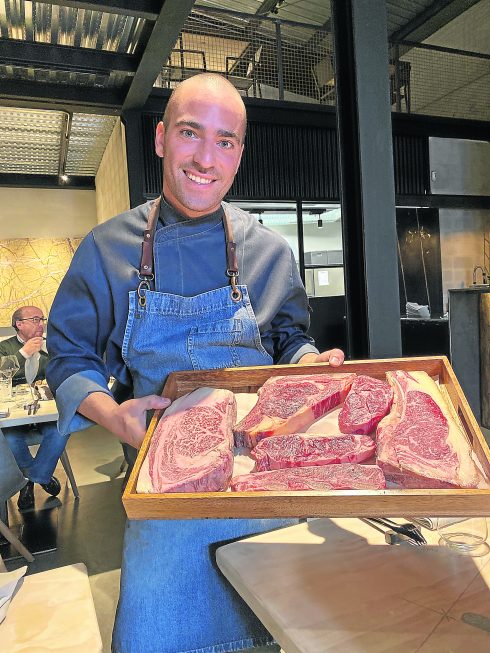THERE were three glasses on the worn, wooden bar, each containing a different coloured liquid. “Try them,” said the barman, “But start with this one.”
I was standing in Bar El Pasaje, deep in the heart of Jerez de la Frontera, taking an impromptu lesson in sherry lore – and tasting – from my new friend, Javier Gutierrez.
He was pointing to the glass in the middle, three-quarters full with a deep nutty-brown, very obviously alcoholic substance. “This one is oloroso viejo (old fragrant). A glass of this in the morning sets you up for the day.”
I took the plunge and had a large sip. It wasn’t as strong as it looked: not at all sweet and with a nutty flavour to match its colour. I could see what he meant.
Next was the thin looking, straw coloured liquid. I knew this one. It was fino, the driest of sherries and just right for my late morning visit to this strange little bar. It seemed locked in a time capsule with its scruffy green wallpaper and huge barrels for dispensing the drink which made the city’s fortune.
I was savouring the tangy taste of my fino because Javier told me what was coming next: the thick, browny-black sherry on the left was the local after-dinner tipple of choice, a sweet, treacly Pedro Ximenez.
It was beautiful, but it wasn’t right for a pre-lunch sharpener. Well, not if you had anything else to do before the next morning.
Tucked away on Calle Santa Maria, El Pasaje doesn’t attract many of those who visit this southern Spanish city. More’s the pity because you can mingle with the locals while sampling the wine which took its name from Jerez.
If a class system exists in the city, it stops at the swing doors leading to the bar. My fellow drinker included retired grandees and professionals – briefcases cast carelessly aside – who stood happily alongside shop workers and builders discussing football, crop prices, local politics and more football.
“A glass of this in the morning sets you up for the day.”
There was plenty of laughter and gesturing and animated voices – as you find whenever a couple of Spaniards get together, particularly when a glass or two of fino helps the discussion along.
Javier topped up the glasses and marked his clients’ account in chalk on the bar all the while, as the smell of strong tobacco cut across the aroma of sherry.
The one thing you can’t bottle is the atmosphere – though they’ve probably tried in a city where there’s a variety of the local specialty for almost every hour of the day.
I said my goodbyes and stepped a little uncertainly onto the street, then stepped back to avoid being run over by a delivery truck. Carrying sherry, of course.
Suitably chastened, I followed the sherry trail to the edge of the city centre. Jerez is ringed by bodegas, those vast, gloomy storage houses known as ‘cathedrals of wine’.
You couldn’t describe it as a spiritual experience, but wandering between the long rows of huge barrels, three or four high, does invite a sense of awe. The low light, the peeling paint and the heady atmosphere of must and alcohol are enough to leave you in need of a drink.
All the leading sherry houses host bodega visits and the most popular is probably the best-known of all, Gonzalez Byass. It might not sound like a barrel of laughs but a guided tour of the vast complex is worth the effort.
This is where Tio Pepe – the world’s best-selling sherry – is produced. There are acres and acres of bodegas, and you can view barrels signed by the famous (personalities as diverse as Picasso, Bobby Charlton and a number of Europe’s royalty).
It was here that I caught up with the world’s most drunken mice: workers leave a couple of glasses out each day and the tipsy rodents scuttle from their nests to the sherry and up the miniscule ladder left for their convenience. They don’t seem to scuttle back quite so quickly.
Another excellent place worth a visit is Emilio Lustau, which has been producing award-winning sherries since 1896.
Its 19th century ‘cathedrals, situated a short walk from the centre on Calle Arcos, hold a staggering seven million litres of wine and seeing them is certainly nothing short of amazing.
Charming host Almudena de la Maza explained that the company has worked hard to market its 40 brands in the UK and America.
And it seems to be working with both the Washington Post and New York Times recently singing the company’s praises.
If a class system exists in the city, it stops at the swing doors leading to the bar
In particular, the Post insisting that Lustau’s finos, amontillados and manzanillas are the perfect combination for Asian cuisine, adding: “everyone should try it at least once.”
Almudena explained: “It is getting rid of its staid image in the US. They are rediscovering the experiences of sherry again.”
Once I had sampled the product at the end of the tour, I decided to clear my head with a stroll around the nearby Moorish castle, the alcázar. The grounds are full of orange trees and water gardens, but it’s the peaceful Arab baths and the beautiful mosque which capture the imagination.
The alcázar complex boasts a camara obscura, housed in the 17th century governor’s palace. As the lenses in the cupola are opened the city unfurls in the round and, with deft hands, the operator moves the levers to transport you from one church to the next, from sherry vineyards to bodegas, from alleyways to broad avenues.
The awesome cathedral lies in the shade of the castle complex, and nearby is San Miguel, which lends its name to one of the city’s two gypsy quarters. The other, Santiago, is west of the city centre.
Here you find a distinct style of flamenco, quite different from the more familiar Sevillano interpretation. Here, too, dozens of tiny tascas, or tapas bars, where the locals will fling a chair aside and dance to a guitarrist’s passionate playing without a moment’s notice.
Back in the centre, Calle Larga, the hub of Jerez’s elegant shopping district, is a great place to stroll. High street fashion stores and quirky specialist shops occupy converted urban palaces here: and the patios and wrought iron railings open on to a broad, café-lined pedestrianised street.
North east of Calle Larga is the world-renowned Royal Andalucian School of Equestrian Excellence. It started as a private passion for the scion of one of the city’s great sherry houses, but despite being a public institution for less than 30 years, the school is a mecca for horse lovers.
Monks at the Carthusian monastery on the edge of the city began breeding pure Spanish bloodlines six hundred years ago, and the amazing Andalucian horses are the result.
Little wonder they can walk on their hind legs, turn on a one euro coin and leap to order. They could probably serve you a glass of fino and some tapas with a little extra training.
The city’s two great loves, sherry and horses, are combined during the May feria. Ostensibly a horse fair, the feria has turned into the city’s biggest party of the year, when you can sit at one of the stalls or bars knocking back the sherry and admiring the parade of riders in traditional costume showing off their elegant charges.
But Jerez doesn’t wait until spring to live life outdoors. The mild winter weather – well most years, at least – means you can bask at a street café even in March. And besides, with the latest batch of sherry recently released, why wait months to try it?
Click here to read more News from The Olive Press.






Which Pedro ximenez sherry did you try. This sounds like the one I have been looking for.